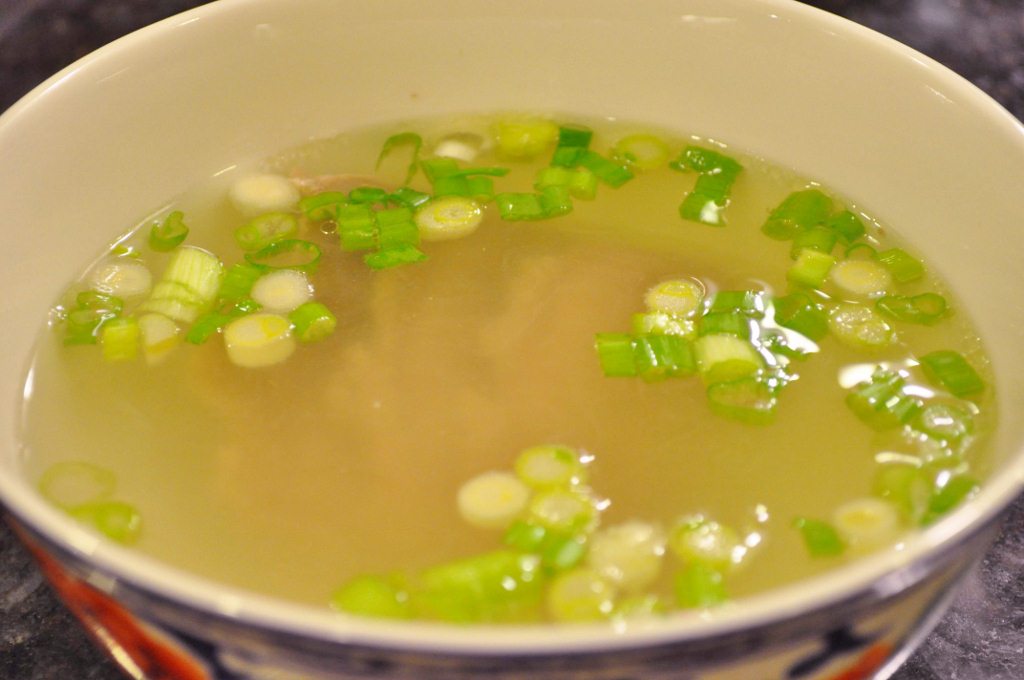
This Korean Beef Soup or Gogiguk (고깃국) is probably one of the simplest soups to make ever. It is also one of the most important to learn because it can be the foundation for many other Korean soups such as Manduguk (만두국), Yukgyejang(육계장), Mooguk (무우국)…etc. But you may be surprised how wonderful it tastes- just by itself. I have previously mentioned making beef stock in my Dduk Guk w/ beef and dumplings post, but this deliciously clean yet hearty beef soup deserved a post all on its own. Also, the way how you finish the soup is different when you are serving it as a soup so here we go!
A little background on how this soup became my go-to soup to make when you don’t really feel like cooking a lot but do have some time to spare.
Korean food can be divided into Northern style and Southern style much like most cuisines based on the regions. After Korea was divided into North and South Korea in 1945, many North Koreans fled to Seoul and further south to escape the communist rule of North Korea. Because my parents are originally from North Korea (they fled to South during the Korean war too), the style of Korean food I grew up with was Northern. This style has been and still is my favorite, of course. North Korean foods are usually less spicy, less salty and more hearty than the Southern style, usually cooking with a lot of meat and their fat. Naturally, North Koreans needed more fat and less salt to survive their very cold winters. One can divide South Korean food even further into different regions within South Korea but for now I’ll just group them altogether. South Korean food is spicier, saltier and usually lighter in taste. The saltiness and spiciness get stronger as you go down further south.
My husband’s family is originally from the South (my mother-in-law is from Seoul, so I got to taste the best of both worlds. This type of beef soup made from a leaner meat like brisket or shank must be more of a Southern style cause I just don’t remember eating this soup while growing up. Our family’s favorite soup was Kalbitang (갈비탕) which is essentially soup made from boiling short ribs – a lot richer soup even after skimming off the extra fat from the top. When I got married, my husband kept asking me to make this Gogiguk which I really did not know about and had to learn from my mother-in-law. This soup may not be as rich as Kalbitang but it is certainly flavorful enough and easy enough to make.
Once you learn how to make this wonderful Korean Beef Soup or Gogiguk, it’s quite simple but there are few tips that can make all the difference in the flavor. Here are some of them-
1. WATER: Using the right amount of water is important. Too much water and the soup will taste watery. Err on the side of using more meat and/or less water, you can always dilute it if it becomes too concentrated.
2. MEAT: Korean cuts of beef and US cuts are different so it’s hard to match up exactly but the best cuts for this soup are brisket, flank or shank. Find one that has some amount of marbling because if you use cuts that are too lean, they stay tough longer and is not as tasty when you eat it. If you want to know more about different Korean beef cuts, go to my Know your Beef Cut post.
3. Do not add salt until the meat is fully cooked. Adding salt earlier will not allow all the flavors from the meat to be drawn out into the broth.
4. Do not add cold water to a hot soup/stock. If you need to add additional water to your soup during the cooking process, add hot water. Adding cold water will clear up the soup and will decrease the flavor.
Korean Beef Soup (Gogi Guk)
Servings: 3-4 Cooking Time: 1 hr 15 min Difficulty: Easy
Ingredients
- 1 lb beef brisket
- 10 C water
- 1 onion
- 3 green onions (2 whole, 1 sliced)
- Sea Salt
- Fresh Cracked Pepper
Directions
1. Trim off any fat off the brisket. Soak it in cold water for 10-15 min. to draw out any blood in the meat.
2. Peel the onion and clean the green onion and cut off the root ends.
3. Bring a pot of cold water + meat+onions to a boil on medium high heat. Do not cover.
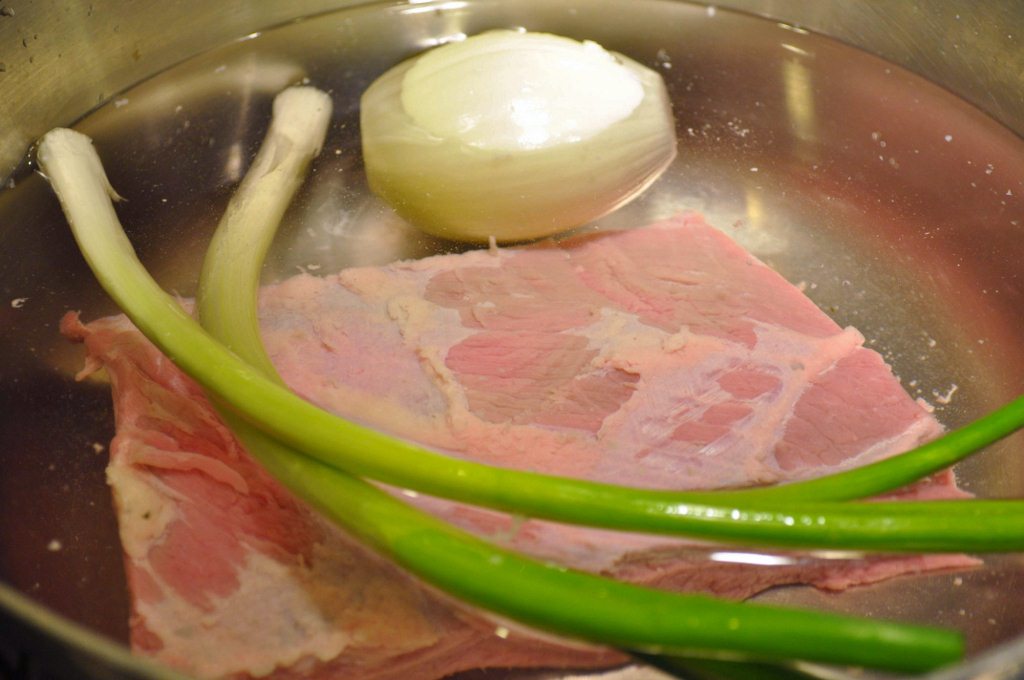
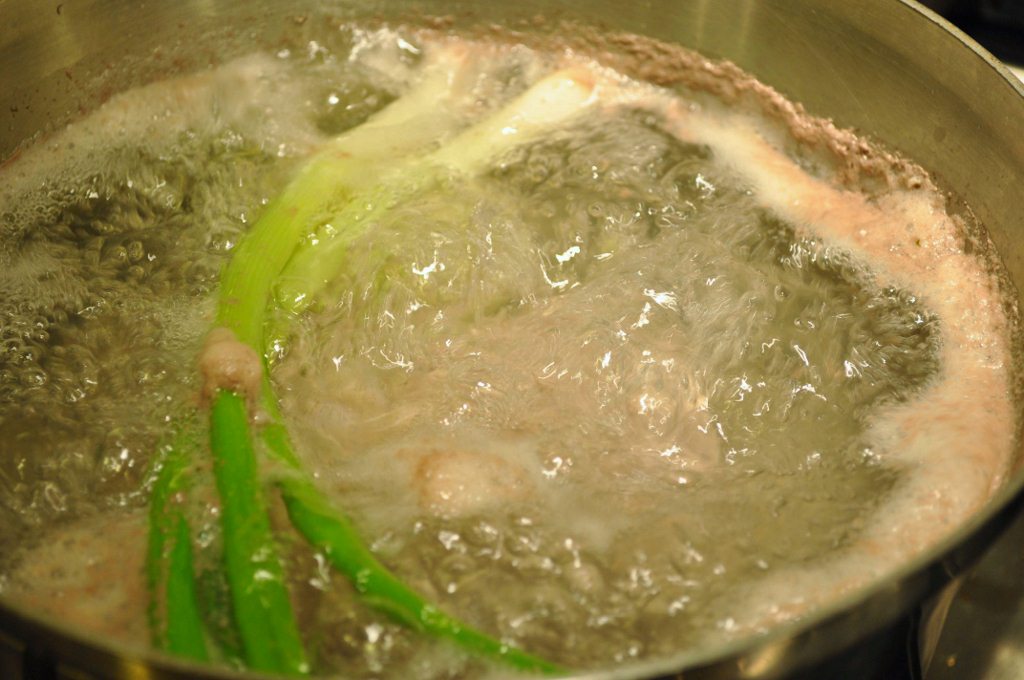
When it starts to boil, you will see some brownish foam appear on the surface. Skim off the foam as they are just impurities from the meat and will cloud up the soup.
4. Reduce the heat to low and let the soup simmer for 1 hour.
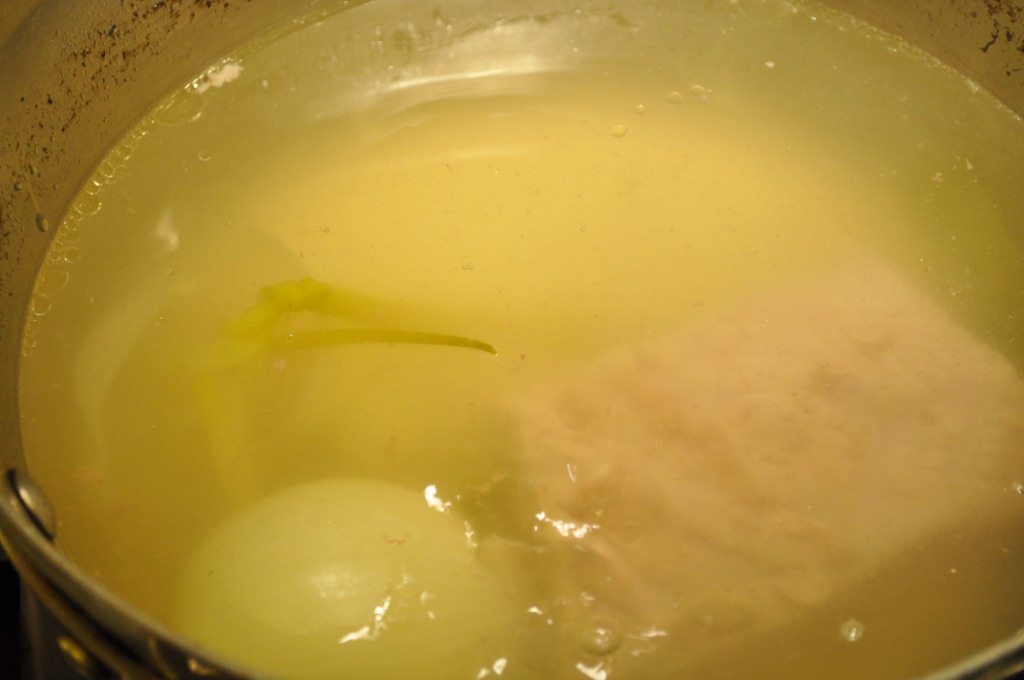
This is how the soup should look like when it is fully done. Season with some salt but allow each person to finish the seasoning on their own with additional salt and fresh cracked pepper.
Test the tenderness of the meat by piercing it with a fork or a sharp point of a knife. If it goes in easily without much resistance and also if there’s no blood coming out, the meat is ready to be taken out. Let the meat rest on the cutting board for couple minutes before slicing.

Cut the meat against the grain, cover and set it aside.
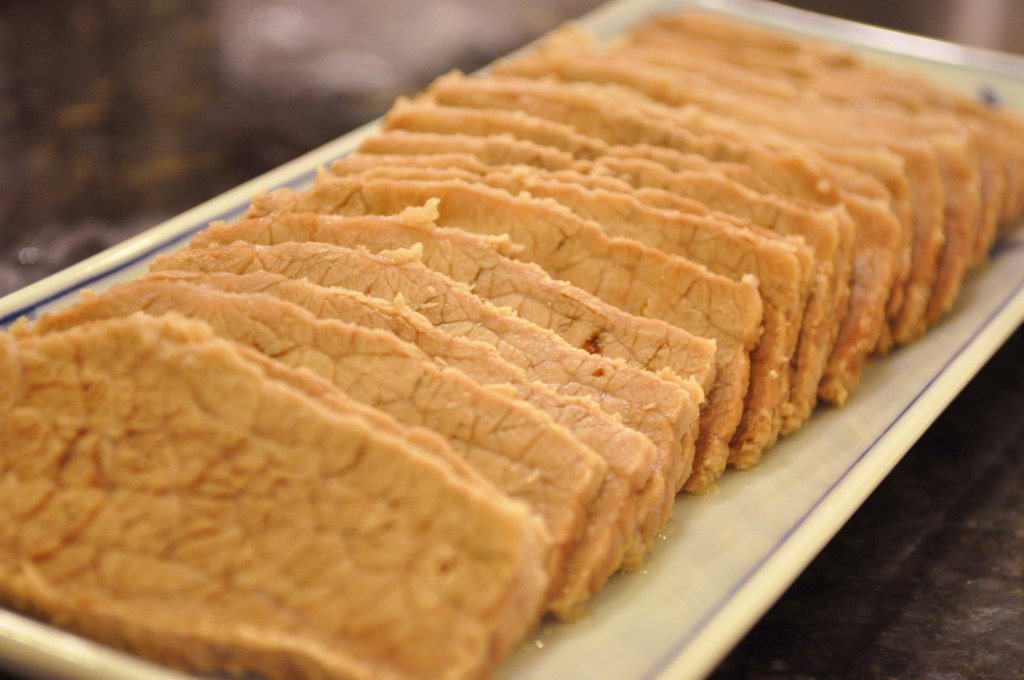
Serve some of the meat slices by itself with some soy sauce and vinegar. This is called Sogoki Sooyuk (소고기 수육) and is often served separately with the soup.
5. Lightly season Korean Beef soup by adding some good quality sea salt. Start with 1-2 tsp, stir it well then taste and adjust. It is best to let each person finish the seasoning with some salt and pepper to their taste.
6. Garnish with some fresh chopped green onions! It’s a MUST!
Hearty Beef Soup (Gogiguk/Kokiguk)
Ingredients
- 1 lb beef brisket
- 10 cups water
- 1 onion
- 3 green onions (2 whole, 1 sliced)
- Sea Salt (Trader Joe's) (to taste)
- Fresh cracked pepper (to taste)
Instructions
- Trim any fat off the brisket. Soak it in cold water for 10-15 minutes to draw out any blood in the meat.
- Peel the onion. Clean the green onion and cut off the root ends.
- Bring a pot of cold water with the meat and onions to a boil on medium high heat. Do not cover.
- When it starts to boil, you will see some brownish foam appear on the surface. Skim off the foam as they are just impurities from the meat and will cloud up the soup.
- Reduce the heat to low and let the soup simmer for 1 hour.
- Test the tenderness of the meat by piercing it with a fork or the sharp point of a knife. If it goes in easily without much resistance and there’s no blood coming out, the meat is ready to be taken out. Let the meat rest on the cutting board for a couple minutes before slicing.
- Cut the meat against the grain, cover, and set it aside.
- Serve some of the meat slices by itself with some soy sauce and vinegar. This is called Sogoki Sooyuk (소고기 수육) and is often served separately with the soup.
- Lightly season the soup by adding some good quality sea salt. Start with 1-2 tsp, stir it well, then taste and adjust. It is best to let each person finish the seasoning with some salt and pepper to their taste.
- Serve the soup by adding a few pieces of the sooyuk and some freshly cut green onions. I love just adding rice into the soup and eating it together with some kimchi or other side dishes.
Tips & Notes:
- WATER: Using the right amount of water is important. Too much water and the soup will taste watery. Err on the side of using more meat and/or less water, you can always dilute it if it becomes too concentrated.
- MEAT: Korean cuts of beef and US cuts are different so it’s hard to match up exactly but the best cuts for this soup is brisket, flank or shank. Find one that has some amount of marbling because if you use cuts that are too lean, they stay tough longer and is not as tasty when you eat it.
- Do not add salt until the meat is fully cooked. Adding salt earlier will not allow all the flavors of the meat to be drawn out into the broth.
- Do not add cold water to a hot soup/stock. If you need to add additional water to your soup during the cooking process, add hot water. Adding cold water will clear up the soup and decrease the flavor.
Nutrition Information:
Serve the soup by adding few pieces of the sooyuk and some freshly cut green onions. I love just adding rice into the soup and eating it together with some kimchi or other side dishes. This rice and soup really enhances the taste of kimchi or any other Korean side dishes (especially more salty, spicy or sweet ones) because it serves as a great backdrop for them. Bon Appetit!
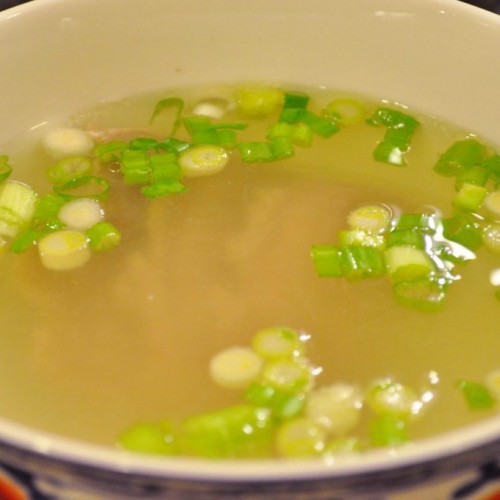
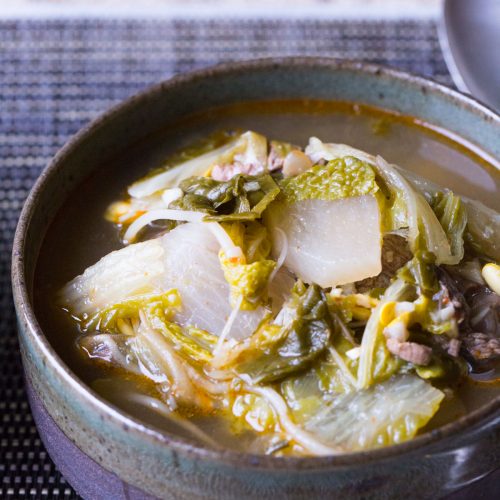

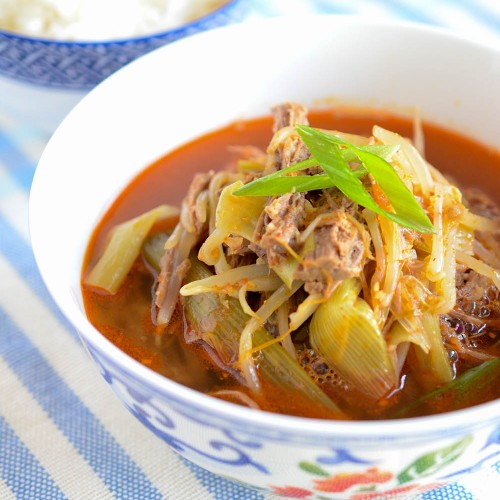
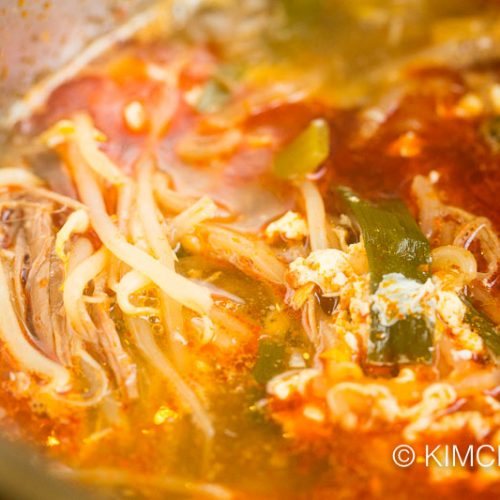
















Such a well-written and easy-to-follow recipe! I learned something new about soaking the meat in water before boiling—it really helped produce a clearer broth with less scum to remove. I added daikon and let it simmer for a few minutes to enhance the soup’s natural sweetness before serving. I’ll definitely be making this again! And yes, green onions are an absolute MUST! Thank you
Wonderful!! Adding radish definitely adds a great sweet flavor. I always add it to Galbitang but adding it to regular gogiguk will work too. Thank you for the 5 stars!
Is this the soup that was always served in a small bowl that came with non-soup based dishes in restaurants in Seoul? IE. an order of fried rice would come with a small bowl of soup on the side, is this what it was? Sometimes it may have had green onion slices.
So the beef broth soup may come with dishes like Bibim Naengmyeon (spicy bibim noodles) and yes, this can certainly be it. If you are thinking of the egg drop soup kind of soup that comes with Chinese Fried Rice then that one is usually anchovy broth based. Hope that helps, good luck!